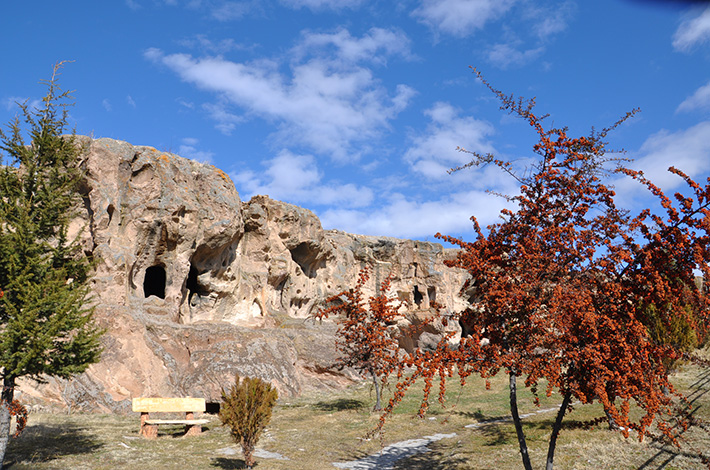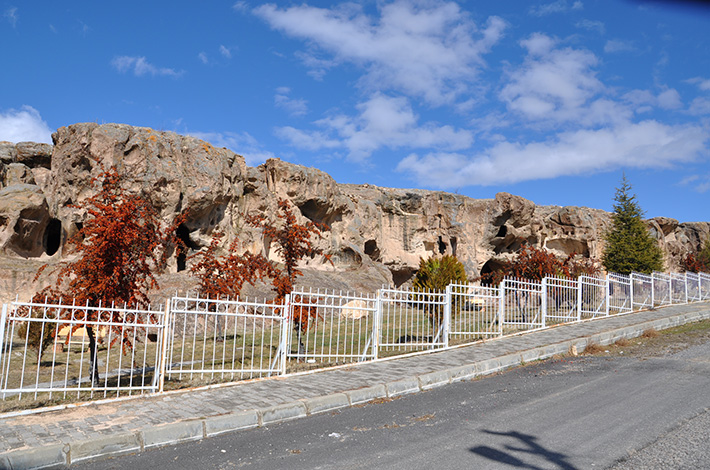There are numerous monasteries carved into the rock in Cappadocia. Among them, Gümüşler Monastery is one of the most aesthetically pleasing and well-preserved examples of these architectural wonders. It was constructed from the bedrock between the 8th-12th centuries, encompassing a central courtyard, a church, underground spaces, and other connected structures. The height of the steep walls of the courtyard is 14 m. The large room to the north and the central courtyard floor were used as cemeteries. The inner part of the western wall of the courtyard is carved in two layers. Inside the closed Greek cross-designed church, four pillars made of bedrock were plastered and decorated with rosette motifs. There are three tombs in two niches in the northern cross arm. To the west of the naos, there is a cradle vaulted entrance space. The mural paintings were repaired by the British archaeologist-restorer Michael Gough in the 1960s. It is estimated that at least three different masters worked in the mural paintings of the church. The upper section of the three strips in the main apse contains the Deisis scene and the symbols of the Bible writers, while the lower strip displays images of church fathers, including Great Basileios of Caesarea (Kayseri), Gregory of Nyssa (Nevşehir), and Gregorios of Nassians (Bekarlar-Aksaray). The Gospel to Mary, the scenes of the birth of Jesus and the Offering to the Temple on the northern cross, and the figures of John the Baptist and St. Stephanus must have been created by a second artist. The figures of Mary and child Jesus to the south of the gate with respect to the naos from the inner narthex and the archangels Gabriel and Mikael on both sides belong to a third artist. The walls of a room above the narthex feature a composition of hunting scenes and various animals that are not typically found in Cappadocia. Based on the iconographical and stylistic features, the church paintings can be dated to the 11th-12th centuries.
GÜMÜŞLER MONASTERY AND THE UNDERGROUND CITY




